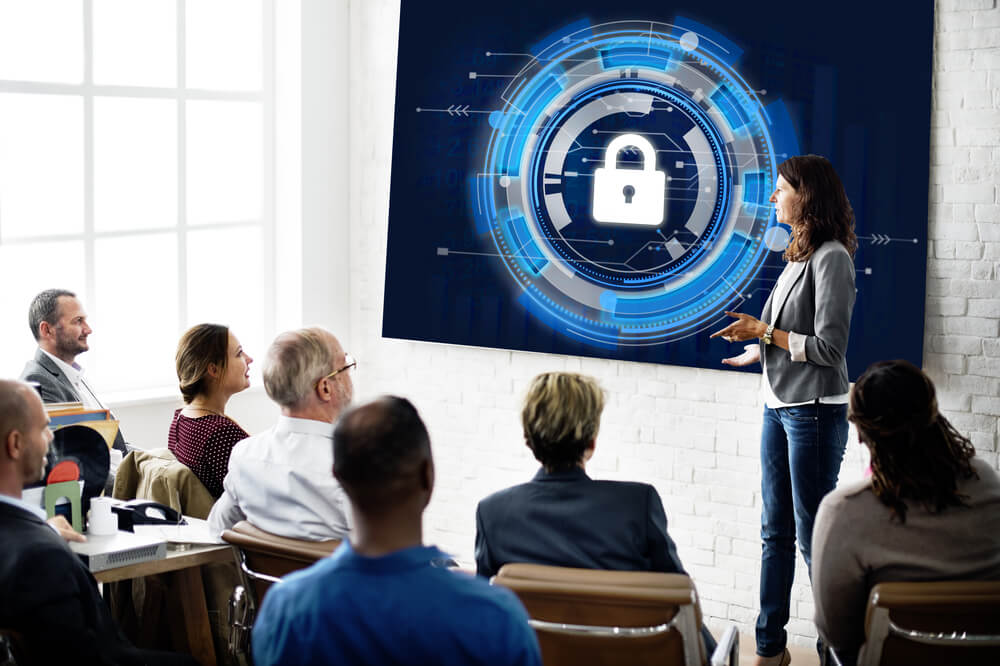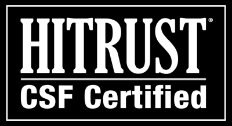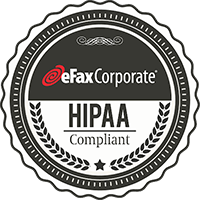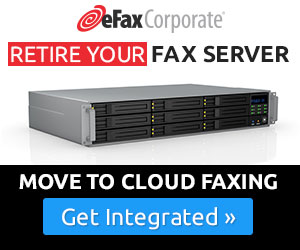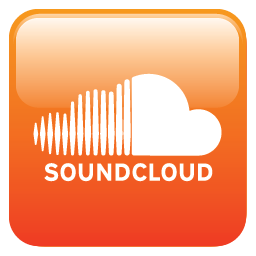How Cloud Fax Solutions Protect Student Privacy
As a higher education IT professional, you’re probably aware that maintaining data security and privacy standards is critical to running a competitive, cost-effective and compliant institution.
Until recently, the traditional analog fax machine was the standard-bearer in fast and secure document transfers. Administrators would crowd around community fax machines dialing fax numbers and sending sensitive information across distances throughout the day.
For decades, the fax machine was the only document transfer method that was deemed secure, reliable and compliant by the industry, including when transferring transcripts, financial forms, disclosures and other highly confidential documents.
Education Records and Other Confidential Student Information:
- Administrative data
- Applications
- Coursework
- Disclosure
- Financial information
- Medical records
- Transcripts
Today, cloud technology has surpassed the standalone fax machine as the preferred way to quickly, privately and securely transfer limitless amounts of confidential information, while keeping compliant with escalating data security and privacy standards.
When you consider that key admissions processes – such as financial aid, enrollment and registration – are also done online, it’s no wonder higher education is making the logical, timely and opportune move from the traditional analog fax machine to a cloud solution.
Traditional Faxing Is a Security Risk
When you consider that the traditional analog fax machine has undergone few security updates since “electric printing” was first invented nearly 175 years ago, it’s not surprising that the fax process a data-security risk in today’s office environments.
Yes, Fax has been widely accepted for years as a secure document transmission method, but how much control do you really have of faxed documents after they are sent or received? Think of it: Faxes that are printed-out to the fax’s tray may be left out in the open until someone comes along to claim them.
The Birth of a Machine
The analog fax machine was first manufactured for commercial use in 1985.
The technology was invented nearly 175 years prior, in 1843.
If the fax machine is not in a secure, controlled-access location, there is no physical or environmental security to safeguard sensitive information against data breaches. And today, fax capability has been integrated into multifunction printers which are typically located in common areas, where access by unauthorized personnel cannot be restricted.
Nor is there a way to track or control the security and privacy of incoming faxes that have been printed. Credit card and social security numbers, academic records, and other confidential information are potentially exposed to unauthorized viewing and even theft.
Moreover, there is nothing to stop unauthorized personnel from inadvertently grabbing the wrong fax, distributing (or discarding) faxes incorrectly and leaking confidential information to unauthorized personnel. A carelessly discarded fax can be easily fished out the trash after hours. From the moment a fax prints, it is off the grid with no way for administrators to track or analyze its history.
Even fax servers can potentially put confidential information at risk if the hard drives are not properly ‘sanitized’ when the server is taken out of service or re-purposed.
All of this puts analog faxes at an increased risk for:
• Delayed transmission
• Intentional and unintentional data loss
• Data loss due to mechanical or human error (e.g., an administrator picks up the telephone before the transmission process is complete.)
• Data loss by unauthorized personnel for criminal or noncriminal purposes
• Misuse or theft of confidential information
• Unauthorized access to confidential information by unwelcome parties
While knowing when faxes are sent and received is useful, it is not the only information that educational institutions need when transferring data.
With data breaches quickly becoming a more common occurrence in the education industry, administrators need to know where a fax has traveled and the individuals with whom it has interacted.
When institutions of higher education lag behind the curve of technology adoption (as opposed to staying ahead of it), inefficiency and data leaks are the result. Contrary to popular knowledge, noncompliance occurs the moment a data leak occurs – whether it is discovered by a third party or not. Institutions can face legal penalties for noncompliance with data security and privacy laws whenever any such data breach occurs.
But a weak fax infrastructure no longer needs to threaten the data security of the education industry. By upgrading to a secure cloud solution, institutions of higher learning can deliver faster, more reliable and private data transfers to students and faculty.
Cloud Faxing Enhances Compliance & Security
Cloud faxing mitigates the risk of non-compliance and strengthens data security across a number of key administrative functions, letting you:
• Fax and Track Multiple Documents –Cloud faxing allows educational institutions to send and receive limitless amounts of confidential information, while keeping compliant with the Family Educational Rights and Privacy Act of 1974 (FERPA)—a U.S. federal law that governs the access of educational information and records—as well as other data-security and privacy standards governing the industry.
Every university administrator knows that it is not easy to track every document that enters and exits the office – paper or otherwise. With a cloud solution, however, institutions can track all incoming and outgoing faxes – whether they are sent to a fax cloud account or directly to an administrator’s secure email account.
With cloud faxing, university administrators have the capacity to fax multiple documents to a single recipient or a group of individuals—all without needing to wait in line, dial numerous fax numbers or contend with busy signals.
• Maintain Audit Trails – If you have never used a cloud fax solution before, then you’re probably not aware of the benefits of audit trails or how the documentary evidence they provide can be of importance to your institution.
Having a chronological history of faxes is like having a digital paper trail that can never be erased, lost, tampered or hidden from view.
Chronological documentation is of particular necessity when dealing with sensitive data, such as applications, disclosure forms, authorizations, medical records, coursework and other confidential information that needs to be tracked for the protection of both the sender and the receiver.
Having the capacity to track and monitor the seizure, custody, control and transfer of sensitive data – particularly when it is time-sensitive or subject to a strict chain-of-custody schedule – is critical in a work environment where data leaks happen continuously. Of course, it remains the responsibility of universities to prevent the compromise of data security at all times.
• Better Serve Student Needs – From enrollment and registration to financial aid deadlines, the pressure for students to deliver key documents on time is undeniable.
As more students say they prefer using their cell phones, tablets and other hand-held devices to quickly, privately and securely send and receive this information, the demand for digital faxing is expected to increase.
In other words, one of the best ways universities can serve the needs of busy students is by sending student records and other sensitive data via secure email, where it can be accessed anywhere, anytime—from any Web-enabled device.
• Reduce Costs – Upgrading to a cloud solution eliminates virtually all costs associated with sending and receiving traditional paper faxes, including printer paper, ink and toner costs.
Higher education professionals who own traditional analog fax machines are probably aware that maintaining and repairing fax machines can be costly. However, it’s not just repair bills that institutions must contend with. There are also phone and fax server bills, and the need for a full-time IT staff.
With the cloud, there are no software or hardware upgrades or the usual costs associated with faxing. If technical support is needed, all the administrator needs to do is contact his or her service provider for assistance.
Upgrading to a cloud solution offers educational institutions the capacity to improve satisfaction among students and faculty, minimize waiting times for faxes and reduce fax costs by up to 50%.
• Track and Report Costs – With a traditional premises-based fax infrastructure, IT administrators have to account for up-front capital investment in equipment and software as well as on-going maintenance and communications costs. It is not easy to know how much they are currently spending on faxing in any given month or quarter.
With cloud faxing on the other hand, IT administrators can track and report their actual fax costs to the penny on a monthly, quarterly or annual basis as needed.
A Final Thought
By delivering faster, more convenient fax services—e.g., no waiting in line, dealing with busy numbers or tracking down missing faxes—a cloud fax solution offers increased satisfaction among staff, faculty and university administrators.
Cloud faxing immediately benefits:
- Faculty
- Students
- Administrators
- Secondary schools handling student record transfers
- U.S. federal agencies (e.g., Department of Education, Internal Revenue Service and Department of Health and Human Services.)
There is no initial set-up and the entire process is as simple as sending an email. Because advanced data encryption and data storage are used to keep sensitive data protected, institutions of higher education can be certain their fax infrastructure is FERPA compliant.
eFax Corporate
Administrators who want to close the gap on data storage leaks by adopting new, more secure ways to transmit confidential information (both internally and externally) year-round will need to look no further than to eFax Corporate,® the world leader in cloud fax services.
With eFax Corporate, faxes are sent, and received, as secure email attachments from your inbox. State of the art Transmission Layer Security (TLS) encryption protects your faxed documents during transmission, while 256-bit Advanced Encryption Standard (AES) encryption keeps it safe while at rest in your inbox.
In those instances when it’s not quite time to delete an important fax, there’s cloud storage. Administrators can store limitless amounts of confidential information in a password-protected, securely encrypted cloud-based repository that won’t automatically empty.
Confidential data can be stored, tracked, analyzed and shared (electronically or by printing a physical copy) from any Web-enabled device.
And for those who prefer not to have any company information stored externally, the storage feature can simply be turned off.
With a cloud-based, paperless fax solution like the one hosted by eFax Corporate, institutions of higher learning can better meet the privacy needs of students, cut costs and greatly diminish the threat of data leaks head-on.
